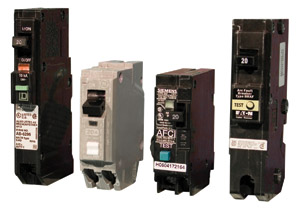The Importance of Home Inspections for Buyers and Real Estate Agent Referrals
When purchasing a home, it’s one of the biggest financial decisions a person will make in their lifetime. As a real estate agent, you hold a pivotal role in guiding buyers through this process, ensuring they are equipped with the right tools and information. One of the most crucial steps in this journey is the home inspection. Referring a qualified and experienced home inspector not only helps your clients make informed decisions but also strengthens your reputation as a trusted agent who puts clients’ interests first.
Why Home Inspections Are Essential for Buyers
A home inspection provides buyers with a clear picture of the property’s condition, uncovering issues that may not be visible during showings. Here’s why inspections are vital:
1. Identifying Hidden Issues:
From structural concerns to plumbing or electrical problems, a thorough inspection reveals potential red flags that could cost buyers thousands of dollars down the line.
2. Negotiating Power:
Inspection results can serve as a negotiation tool, allowing buyers to request repairs or adjust the purchase price to reflect the condition of the property.
3. Peace of Mind:
Knowing the home has been evaluated by a professional gives buyers confidence in their investment, helping them avoid surprises after moving in.
The Agent’s Role in Referring the Right Home Inspector
Real estate agents play a critical role in recommending a home inspector. Referring a highly qualified inspector shows that you prioritize your clients’ best interests, setting you apart as a knowledgeable and reliable agent. Here’s how to ensure you’re recommending the best:
Look for Credentials:
Choose inspectors with certifications from reputable organizations such as ASHI (American Society of Home Inspectors) or InterNACHI (International Association of Certified Home Inspectors).
Experience Matters:
A seasoned inspector with a solid track record will be better equipped to identify potential issues and provide detailed insights.
Local Expertise:
Inspectors familiar with the area understand common issues related to local climate, building materials, and construction practices.
Transparency and Communication:
Recommend inspectors who are clear, thorough, and patient in explaining their findings to buyers.
How Referring the Best Inspector Benefits You as an Agent
When you recommend a top-notch home inspector, you’re not just helping your clients—you’re investing in your own future success.
1. Building Trust:
Clients will appreciate your commitment to ensuring they have all the information needed to make an informed decision. This trust can translate into glowing reviews and repeat business.
2. Enhancing Your Reputation:
Buyers will remember that you referred them to a professional who gave them a complete understanding of their home’s condition, reinforcing your role as a reliable resource.
3. Future Referrals:
A buyer who feels supported and well-informed is more likely to recommend you to friends, family, and colleagues when they need a real estate agent.
A Win-Win for Everyone
By connecting your clients with the most qualified home inspectors, you’re empowering them to make smart, informed decisions. In turn, you enhance your reputation, grow your referral network, and position yourself as a trusted partner in their home-buying journey.
So, make it a priority to partner with the best home inspectors in your area. Your clients—and your business—will thank you.
Ready to strengthen your network with a trusted home inspector? Contact us today to learn more about our comprehensive inspection services!


 What types of AFCIs are available?AFCIs are available as circuit breakers for installation in the electrical distribution panel.
What types of AFCIs are available?AFCIs are available as circuit breakers for installation in the electrical distribution panel. 
